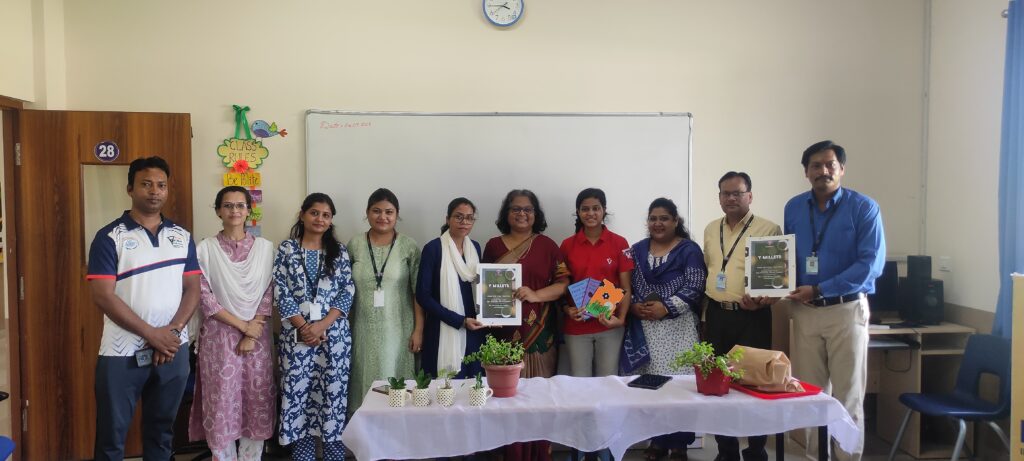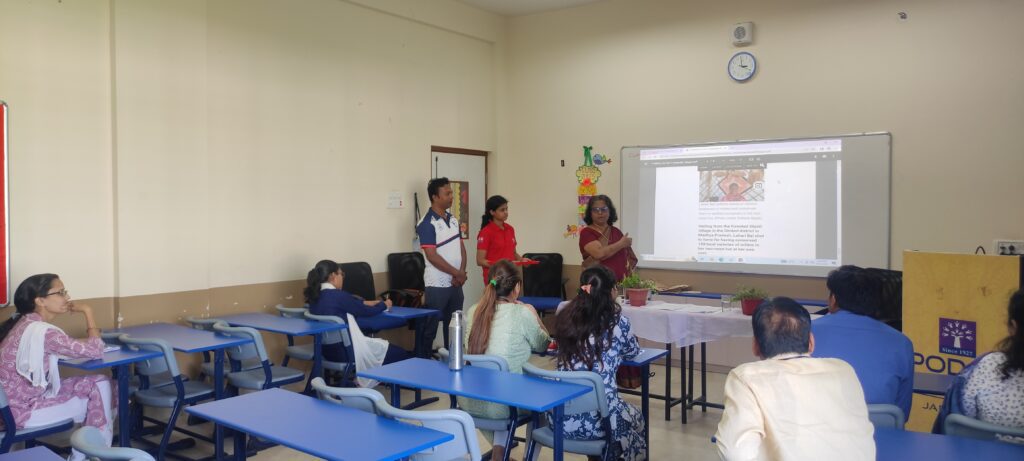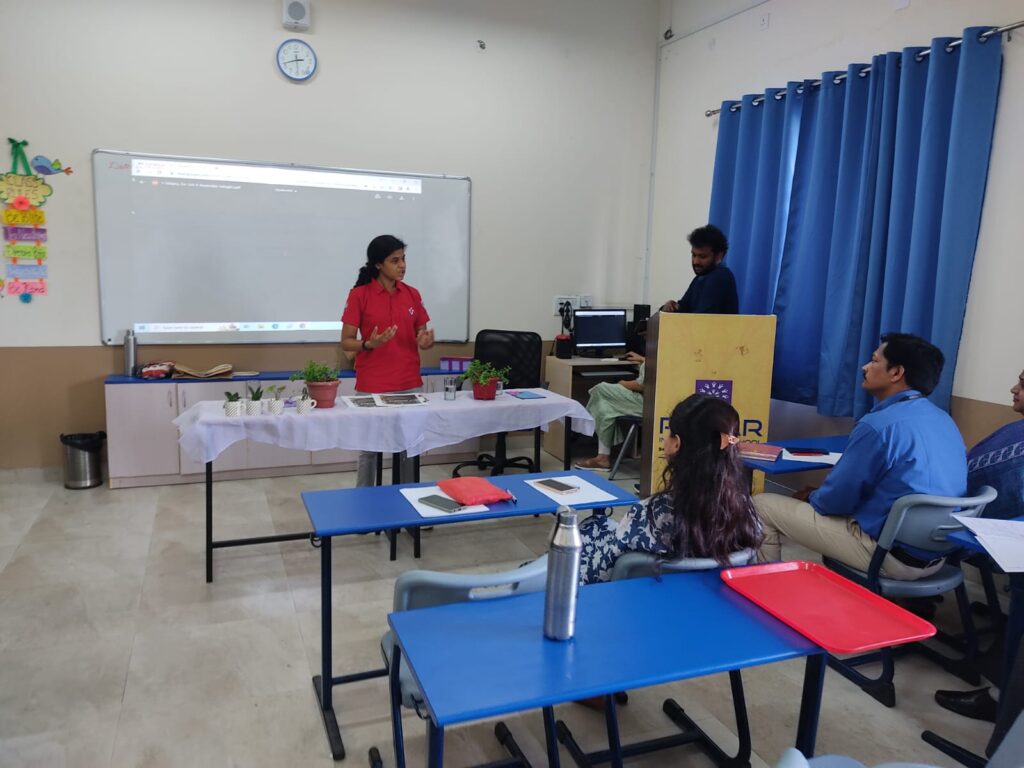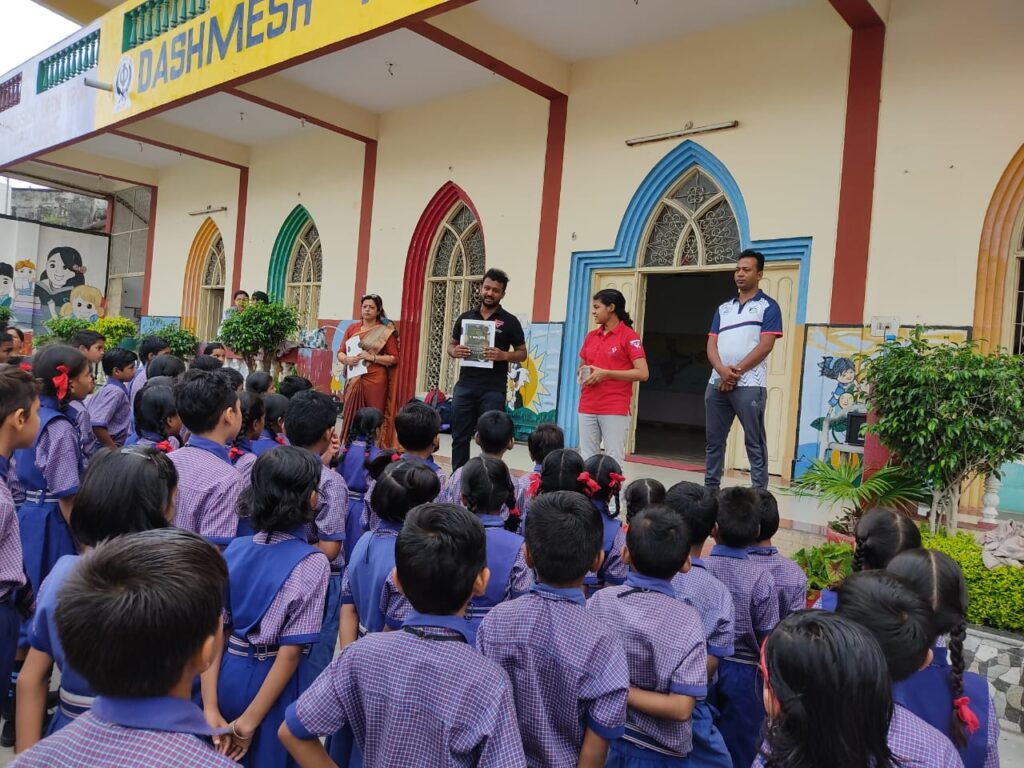21 June, 2024

Y Millets: A Step Towards a Healthier Tomorrow
In an era where fast food dominates our plates and nutritional deficiencies have become common, the YNB initiative “Y Millets” is a refreshing step towards promoting healthier dietary habits. With a mission to educate young minds about the immense benefits of millets, we take this initiative to schools across our town, ensuring that the future generation understands the importance of this superfood.
Food and Agriculture Organization and United Nations has recognised 2023 as International Year of Millets or IYM2023 for awareness about health and nutritional benefits of millets. The Indian Government proposed to celebrate 2023 as International Year of Millets.
What is Millet?
Millets are coarse grains categorized into two types: coarse grains and small grains. They include various nutrient-rich grains such as:
- Jowar (Shabart)
- Bajra
- Ragi (Madua)
- Jhangora
- Bari
- Kangni
- Kutki (small grains)
- Kodo
- Chena (China)
- Sama or Sawa
- Barley
Why Did We Stop Eating Millets?
Millet consumption in India significantly decreased in the 1960s when the Green Revolution promoted wheat and rice as staple foods. As wheat—essentially just a type of flour—gained popularity, the traditional consumption of millets diminished. This shift contributed to an increase in malnutrition and lifestyle diseases such as diabetes, obesity, and digestive disorders.
Millets: A Sustainable Crop
Millets require minimal water to grow, making them a resilient crop in both drought and heavy rainfall conditions. Even if the crop fails, it serves as a valuable source of animal fodder. Crops like Bajra and Jowar demand little effort for cultivation, eliminating the need for chemical fertilizers or pesticides. Additionally, millet crop residues can be used for animal feed, preventing environmental pollution caused by stubble burning, unlike paddy straw.
Millets as Superfoods & Immunity Boosters
In the post-COVID era, millets have been recognized as powerful immunity boosters. They are rich in essential nutrients, including:
- Calcium, Iron, Zinc, Phosphorus, Magnesium, and Potassium
- Vitamin B-6 and B-3, which help regulate metabolism and reduce the risk of cancer
- Carotene and Lecithin, promoting overall health and brain function
- High fiber content, aiding digestion and reducing acidity
Millets have also been proven to help prevent Type-1 and Type-2 diabetes, making them an excellent alternative for a balanced diet.
Spreading Awareness, One School at a Time
Before conducting any session, we seek permission from the respective school authorities to ensure seamless engagement with students and teachers. Our training sessions and seminars are designed to empower teachers with knowledge about millets, enabling them to pass it on to their students. Through interactive discussions, we cover essential aspects such as:
- The nutritional benefits of millets
- The preservation and sustainable use of millets
- Identification of different types of millets
- Challenges faced by Indian millet farmers in today’s market
- Growing millets at home and harvesting them efficiently
- Addressing “plant blindness” by helping students recognize and appreciate plant life
Introducing Five Key Millets
As part of our educational efforts, we introduce students to five essential types of millets:
- Corn
- Finger Millet
- Amaranth
- Pearl Millet
- Sorghum Millet
Through hands-on learning, students become familiar with the appearance, uses, and nutritional benefits of each of these millets, fostering a deeper understanding of their importance in a balanced diet.
Hands-On Learning Experience for Students
Education is most effective when it is experiential. Therefore, we encourage students to take part in a hands-on millet-growing project. Those who successfully complete all stages receive a certificate of achievement. The stages include:
- Sowing: Planting millet seeds and understanding the process of germination.
- Watching Them Grow: Observing and documenting growth patterns.
- Snap with Baby Plant: Capturing an image with the young millet plant.
- Snap When It Has Grown Old: Tracking the plant’s development and maturity.
- Snap at the Time of Harvesting: Celebrating the final stage by harvesting the millets.
Fighting Plant Blindness & Promoting Healthy Eating
One of the biggest challenges in today’s generation is “plant blindness”—the inability to recognize or appreciate the importance of plant life. Through Y Millets, we aim to reconnect students with nature by engaging them in hands-on farming experiences. This not only helps them develop a sense of responsibility towards plants but also fosters a habit of mindful eating. By learning to grow their own food, students gain a deeper appreciation for healthy nutrition and sustainability.
Encouraging Sustainability Through Seed Distribution
As part of our initiative, we provide free millet seeds to teaching staff and students, encouraging them to identify the seeds by name. Surprisingly, very few can correctly name them, highlighting the need for more awareness. To further promote sustainability, we have recycled used paper to create pudiya (traditional paper pouches), just like in the old days, to distribute these seeds. This small yet impactful step helps in reducing the use of plastic bags and encourages eco-friendly practices.
The Bigger Picture
By engaging with schools and inspiring young minds, “Y Millets” is not just a campaign but a movement. We aim to revive the lost tradition of millet consumption, support local farmers, and contribute towards a sustainable future. With every seed sown, we take a step closer to a healthier generation and a greener planet.
Join us in this journey to bring millets back to our plates, tackle plant blindness, and promote a future where nutrition and sustainability go hand in hand!





Knowledgeable knowledge .